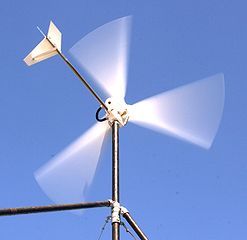Wind Is Intermittent, But Valuable Nonetheless
A reader sends this and writes:
When, not if, a wind turbine’s torque causes O ring and seal lubrication problems, the turbines catch on fire. Each of the large wind turbines have 500 gallons of petroleum lubricant trying to keep up with the rotation. Petroleum is a terrible lubricant, and when the seals crash, most of the petroleum is burned but much remains and the soil is contaminated. Each site is a toxic hazmat site. The attachments are only samples. I am very happy that the wind turbines were not installed in the bays around Cape Cod. Sandy would have taken each one to someplace other where they were supposed to be. With the crash of the grid in much of New England, the failure of electricity to control the direction and rotation of the blades, would have spun them helplessly out of control. The turbine blades would become propellers without aircraft.
Interesting. You begin: “When, not if….,” implying that wind turbines uniformly fail. That’s not true. If you’d like to learn more about the failure rate of wind turbines, here you go.
The attachment essentially says wind is intermittent. No offense, but I think we’re all generally aware of that. There certainly are issues with intermittence – and reliability, though wind turbines have over 98% availability; most of the other 2% is scheduled maintenance. As I write frequently, there are “tough realities” associated with all forms of energy.
The upside to renewables, obviously, is that they are cleaner than fossil fuels, and that’s nothing to be taken lightly given the situation in which we find ourselves vis-a-vis climate change, ocean acidification, lung disease, terrorism, etc.
As the gentleman I interviewed for my chapter on wind in my first book (Renewable Energy – Facts and Fantasies), Dr. Amir Mikhail, CTO of Clipper Windpower told me, “There are people who would rather chop the top off of a mountain (and burn the coal, contributing to lung disease and long-term environmental damage) than put a wind turbine on top of it. Good luck trying to explain that to me.”


Here is a new article about a nuclear technology that, in addition to producing clean energy, would get rid of our present nuclear waste by using it as fuel:
http://news.discovery.com/tech/nuclear-reactor-powered-spent-fuel-121109.html#mkcpgn=rssnws1
The liquid fluoride thorium reactor (LFTR) is a variation of the above reactor.
There is a serious error in the quoted comment.
Wind turbines do not go out of control when their grid connection fails – even in a hurricane!
True, they disconnect from the grid and stop operating until the grid connection is restored, however they have multiply redundant systems for stopping blade rotation – usually by rotating the blade angle so that aerodynamic stall is achieved, and then using two independent breaking systems to stop the blades altogether. The blade angle rotation is achieved using stored power on board the turbine (often in ultra-capacitors). Yaw can be achieved in several ways to face the turbine in the correct direction – either mechanically with electric motors or aerodynamically using the pressure of the wind to rotate the nacelle.
What kind of idiot would use raw petroleum as a lubricant.
The lubricant used on wind turbines is a special synthetic industrial oil chosen for maximum durability. It is DERIVED from petroleum… it is not actually raw petroleum.
It has the same basic toxicity of some of the better quality synthetic motor oils. Assuming that a spill is cleaned promptly, and 99% of the spilled oil is not leaked into the environment, then then the actual impact on the environment from such a spill would be similar to a single person changing his or her own oil at their house for 2-3 years (no-one is perfect in draining the oil while they’re lying underneath their car in their driveway).
In other words, like every other complaint about the “environmental hazards” of wind… this is a completely bogus nonsense claim.